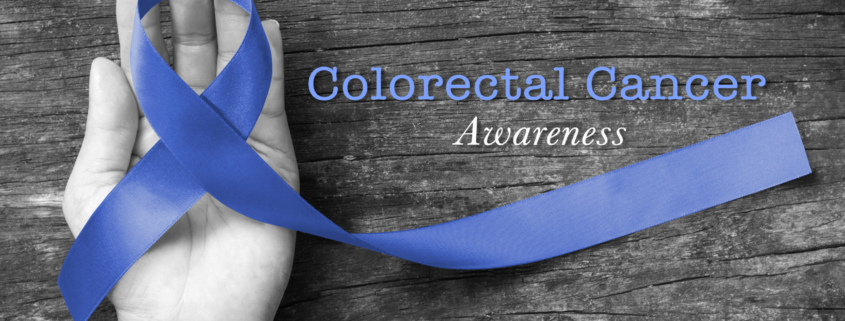The Colon Cancer Foundation’s Lakshmi Yeturu sat down (virtually!) with Dr. Brian Dooreck to find out more about his initiative to arm newly diagnosed colorectal cancer patients and caregivers with substantial resources as they bravely face their diagnosis and treatment. Part I of this interview can be found here.
Can you tell us more about the mission of the Colorectal Cancer Provider Outreach Program (CRC POP) ?
The premise is quite simple. Provide our patients with guidance and direction to the support that is available to them at the time of diagnosis at the bedside.
If a newly diagnosed patient approached you for support, how would you describe CRC POP to them?
The Colorectal Cancer Provider Outreach Program is designed to provide you access to nationally available support organizations, their websites and phone numbers, to call them, connect with them, engage with them, lean into them, pull from them, share with them, and get whatever support you and your family need. There’s no monetization, there’s no hope, there’s no sale, and there’s no email being collected—there’s nothing more than just providing direction to you at the time of diagnosis to reinforce that you’re not alone and to provide you with the support you need here and now.
What kind of resources do you look to arm them with?
- For their mobile phone, texting the word ‘COLON’ to 484848
- All our providers have the ability to put a PDF on their website
- All our providers have the ability to put an order in their electronic medical records
And that’s all that’s needed…there’s not much more to it. The providers are being given the simplest of tools to lead patients to a centralized web page, centralized PDF, and a centralized text number to give patients direction.
Does CRC POP seek to provide resources for caregivers and loved ones as well?
As I mentioned earlier, of the 150,000 people diagnosed with colon cancer every year, every diagnosis has a family member or a support system around them. So, if you take that number and extrapolate it out, every person that is affected may affect, on average, three or five or six other people. Do the math and that number becomes a lot more than 150,000. We expect that very soon, the support that we are providing at the time of diagnosis can not only help the patient and their family but also promote screening and prevention for those organizations that have preventive screening programs
How has CRC POP progressed since it was founded? In your opinion do you think patients will seek POP as a resource for comfort or information following their diagnosis?
his idea was conceived in May or June of 2020; we had initial calls in July, drafted it and we launched on October 1st. We are now in a position where CRC POP is set up, it is up and running and we are in the process of sharing it with GI providers through social media.
Our goals are to connect with the three GI Associations, to find tools through them, through the National Colorectal Cancer Roundtable and the American Cancer Society. In addition, we want to connect with endoscopy centers. I am all about finding the outcomes and results we need to get to the providers quicker, faster, and easier.
I’m not going to be cold calling. Instead, we have started by getting about 10 of the largest groups aware of this and signed onto it in principle, including Gastro Health and GI Alliance. About 1200 GI doctors represented by those 10 groups now know what we’re doing and it’s now about ‘How do you utilize what is there?’
Personally, do you associate the terms ‘comfort’ or ‘information’ with the aims of CRC POP? Or is there another term you think better resonates the mission of CRC POP?
The missions are for me clearly ‘reassurance and support’. I would say reassurance and support at the time of diagnosis, provided by the doctor to the patient.
Do you feel like this program will make a real-world impact on the scale of patient information access?
My goal is to measure it every month and to know how many clicks, how many calls each of these organizations are getting because you’re suddenly taking the active, potential user of a resource and providing them with the information in their hands. If it helps one person feel more reassured, more secure and they get the information they need then it is serving its purpose. That’s my goal, to have increased utilization month to month to month by the 14,000 gastroenterologists in the country.
In short, your goal is to measure how this is impacting the patients that you, your partners, or the gastroenterologists that have signed on to this program are diagnosing, and to eventually put this out there so every single board-certified gastroenterologist who can diagnose colorectal cancer introduces their newly diagnosed patient to CRC POP?
Ideally, that would be wonderful because we’re diagnosing the cancer and we’re sending the patient home. And this is how it goes: we diagnose someone and 10 minutes later I’m doing a procedure on another patient and that person is home in a cold panic, not understanding, clouded, diagnosed, Googling ‘Am I going to die from colon cancer?’ What I’m doing is providing reassurance at the time of diagnosis that gives them the guidance they want and need through whatever resources they choose to tap into. What the organizations do, what happens from that point of contact is between the organizations and the patient or the person reaching out. What I’m doing is providing people the direction.
So, what you are saying is that you are being there for the patient even when you’re physically not there for them after they’ve been diagnosed?
Yes, correct, I’ll see them in two weeks but in that two-week window, a lot of things need to be done. They need to get labs, they need to see a surgeon, they need to see an oncologist, they need to get a CAT scan. But besides that, I’m not there for them. They will call my office maybe but imagine having a 24/7, 1-800 number to call to speak to someone, to have a group to join, a community to have. Have their questions answered on things like ‘Am I going to die?’
In these cases, people’s world is thrown upside down, their blueprints in life are ripped up, and that’s kind of what we are trying to provide support for in the simplest of terms. Leveraging free technology and helping people.
Lastly, I just wanted to conclude on an open-ended note. For those within the non-scientific/medical community, do you think that this program will pave the avenue to improve the scale of information made available to patients after they are diagnosed?
I mean the level of information available from these organizations is huge and the level of information they provide is not just clinical, emotional, financial, academic, research, or trial-based. The level of advocacy, lobbying, or opportunity they can provide people is probably so individualized that it’s not measurable. So, I think that the potential of what happens from the contact made by a person—be it a patient, their family member, or their caregiver—with any of these organizations is truly dependent on what they want or need from it and what they express their needs to be. I can almost guarantee you that any organization that is not able to provide that assistance or that direction will say, ‘Listen, we’re really good at this we are excellent at that, but we don’t know anything about that. You know who does? This organization. Ask for this person, here’s the phone number.’ That’s what will happen.
If so, could you describe why it is imperative to support the large-scale sharing of medical information that ensures that all patients are adequately informed about their diagnoses?
Well, I wouldn’t say it’s imperative in the sense that the medical care is not going to get affected in theory. But in terms of imperative to providing the highest quality of care, no doubt. Imperative to providing the most empathetic role as a provider and position, no doubt. Imperative in improving people’s quality of life and sharing something to help someone else at a level that’s not technical, cold, calculated, or that can be measured in a medical chart. That’s imperative. The role of this is imperative because it’s not us who’s being told we have colon cancer and I always say it could be one in a million but you’re that one it’s a 100%.
That’s where I see the role of this program and the reality is it just takes a little courage and a little change in a little shift in mindset of the gastroenterologist to get a new part of their working algorithm or new part of their process into play. You get into their knee jerk response: I diagnose colon cancer, I tell the patient to text 484848, type in the words ‘COLON’, remind them resources are available right now.



